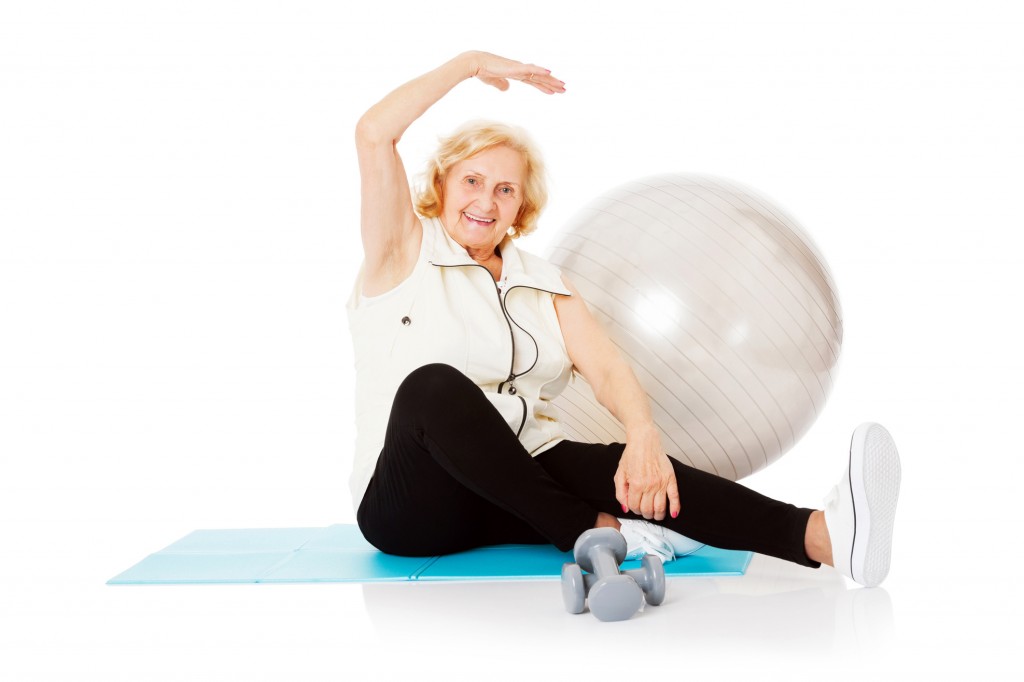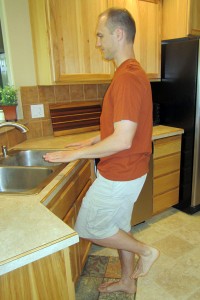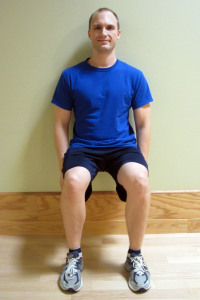Knee osteoarthritis (OA) causes chronic pain, reduces physical function, and diminishes quality of life. Obesity, prior injury, and increasing age are among the risk factors for knee OA, which is more common in women. Typical treatments for knee OA include total joint replacement and exercise. Medication management may include oral anti-inflammatory use, cortisone injection, and supplementation with glucosamine and chondroitin.
A recent meta-analysis of 54 randomized control studies, published in Cochrane Database (January 2015), concluded that therapeutic exercise provides a 2-6 month benefit even after cessation of the exercise program. This benefit is comparable to the use of non-steroidal anti-inflammatory drugs without the side effect risk from drugs. The study concluded that exercise is just as effective in treating knee OA pain as anti-inflammatory medication.
This most recent study looked at 2-6 month benefit when performing exercise. It is reasonable to conclude that long term therapeutic exercise continues to have a positive effect in pain management and functional loss well beyond the 2-6 month time frame. Performing therapeutic exercises improves physical function and alleviates pain levels with little risk. When properly performed, exercise doesn’t significantly increase the risk of further damage or deterioration in OA (or in most other forms of arthritis).
The study also indicated that individually tailored exercise programs tend to result in a greater reduction in pain as well as improvement in physical function. If you suffer from knee OA, initiating a therapeutic exercise program could be the best long term solution in managing the condition while maintaining function and quality of life. A thorough therapeutic exercise program should include cardiovascular exercise, flexibility training, balance activities, and strength training. Seek guidance from a physical therapist, who can design an individually tailored exercise program to meet your specific needs.
Possible options for cardiovascular exercise include bicycling, rowing, and the elliptical machine. Less impact options include swimming and pool-based exercise programs. Exercise studies indicate the effectiveness of aquatic-based programs in reducing knee pain while improving general functional mobility. Performing a long term aquatic exercise program can be highly effective for managing knee OA symptoms. To insure maximal strength gains and carry over in functional mobility tasks (such as going up and down stairs, up and down curbs, and navigating uneven terrain), also incorporate a land-based program. Flexibility is an important component in managing knee OA pain. The goal should be to maintain full knee range of motion (ROM) with both extension (straightening) and flexion (bending). A joint should be moved through its full available ROM daily to remain healthy. Activities such as aquatic exercise, cycling, yoga, and flexibility classes are ideal for maintaining ROM.
Flexibility is an important component in managing knee OA pain. The goal should be to maintain full knee range of motion (ROM) with both extension (straightening) and flexion (bending). A joint should be moved through its full available ROM daily to remain healthy. Activities such as aquatic exercise, cycling, yoga, and flexibility classes are ideal for maintaining ROM.
Balance is an important component to maintaining functional mobility and limiting pain in the knee. Performing therapeutic exercises and weight training will help you to maintain your balance. Additional balancing activities should be performed to insure safe mobility and to reduce the risk of falling. Activities, such as yoga and Tai Chi, have excellent research demonstrating their effectiveness. Practice standing on one foot (near a counter top for support, if needed). It is an easy and effective method to maintain single leg balance which is critical for going up or down stairs and sidewalk curbs.
Strength training programs should include closed chain exercises. Closed chain exercises are closely related to functional movements and tend to cause less strain on your body tissues and joint surfaces. Squats, lunges, and bridging are examples of closed chain exercises. The bridge exercise involves lying flat on your back and raising your pelvis up into the air.
There are many variations of the squat. Perform sit to stands from a chair. If this is difficult, start with using your hands, but eventually you shouldn’t need to use them. Use a standard height chair and see how many sit to stands you can perform in 30 seconds.
For another squat variation, perform wall squats. Stand with your pelvis, back, and head touching a wall. Your feet will be approximately hip width apart and far enough out from the wall. When you slide down, your knees will make a 90 degree angle. From your starting position, slowly lower your body down and hold for time. As you improve, lengthen the amount of time you hold the wall squat. (Another variation is to place an exercise band around your thighs above your knees. It will help to increase the activation of the hip muscles.)
To maintain physical function and quality of life, a therapeutic exercise program (including cardiovascular, flexibility, balance, and strength training) may be the best long term solution for managing knee OA pain. Be certain to perform a thorough warm up and cool down before and after each exercise session. Focus on maintaining your ROM. If it hurts, modify or discontinue the activity, and refer to your physical therapist.
How do you incorporate cardiovascular exercise, flexibility training, balance activities, and strength training into your therapeutic exercise program? Please leave your comments below.
If you have a question that you would like featured in an upcoming blog post, please comment below or submit your question to contact@thePhysicalTherapyAdvisor.com. Be sure to join our growing community on Facebook by liking The Physical Therapy Advisor!
(This article first appeared in the Seniors Blue Book, April-September 2015, pages 106 and 107).


